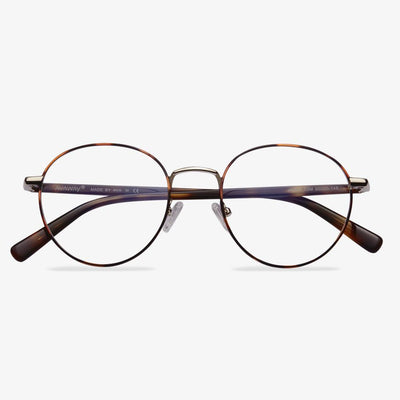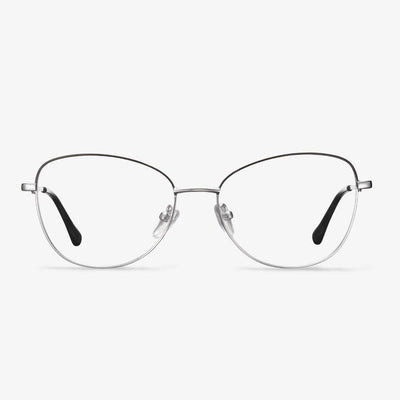Why are titanium glasses so expensive?
Strong and Durable. They are widely used in aerospace technology, jewelry, surgical instruments, and other fields. It is the most progressive material in the eyewear industry. Titanium is a very hard, lightweight metal that is proper for eyeglass frames. With good hardness, high strength, the glasses are not easy to deform. It is not easy to scratch and wear and has good corrosion resistance and plasticity. It has a high melting point, corrosion resistance, and hard electroplating. Titanium can be made into memory metal, which means it can bend and return to its original shape. Hinge is not easy to break, having rust resistance, impact resistance. When it's used in glasses, it fits the bill.If you've ever broken a frame, titanium is possible the best material for you.
Difference between green film and blue film
In addition to the usual hardening, anti-fouling, anti-reflection, anti-radiation, and other functions, the green film has remarkable anti-ultraviolet performance, suitable for people who work outdoors for a long time to use. In addition to the general hardening, anti-fouling, anti-reflection, and anti-ultraviolet functions, blue film’s anti-radiation ability is very good, and it is suitable for computer workers and other people affected by radiation greater.
The coated lenses were originally produced in green, mainly to distinguish them from the uncoated lenses. At 515 nm, the reflection increases the reflectivity by about 2%, so there is a contrast, and the green film is seen in the reflection. This film is the most standard anti-reflective film, and it is the best and oldest one available.
Possible effects of driver's lens color on driving
Color plays a very important role in your everyday driving experience -- red, yellow, and green traffic lights, among many other signs and signals, are designed to grab your attention and keep you safe. If everything you see is yellow, you may make the wrong decision at the red light and may cause an accident. To keep your vision clear in night and day conditions, anti-glare night driving glasses are not just for night driving.
Contact Lens Material - Hydrogels
The raw material of the hydrogel is called HEMA. HEMA is hydrophilic and has a water content of 38% by itself. By cross-linking with other polymers, the water content can be up to 80%. The world's first soft cloaking material (OttoWichterle, 1961) was made from HEMA, called PHEMA. Nowadays, most conventional hydrogels are made up of the copolymer of PHEMA and other monomers.
Difference Between Driving Glasses And Night Vision Goggles
Polarized glasses are made according to the principle of the polarization of light. Night vision goggles are an auxiliary observation tool based on night vision technology with the help of photoelectric imagers. Driving glasses are made according to the lens polarized angle and radian, on the basis of the principle of precision optical design. They can only make good light pass through, and other light sources, like the strong sunlight, the glare of a light source like a car headlight is filtered, thus removing the interference of external light, to avoid the presbyopia, dazzling, and so on. Night-vision goggles are divided into two kinds: One is Night Goggles, and the other one is Thermal Goggles. Image intensifying night vision technology is a photoelectric imaging technology that enhances the faint target image illuminated by night skylight through night-vision goggles with an intensifier tube for observation.
The nose pad
When you're shopping for a driver's glasses, you can't ignore a nose pad. Choose one that is soft and elastic. This way, it won't make your noses feel depressed or uncomfortable.
How to buy anti-blue light products?
In order to further standardize anti-blue light products and make all kinds of products effectively protect eye health, relevant standards have been formulated. Based on the different effects of blue light in different bands on the human body, the transmittance of blue light in each band is required in the standards.
For example, in the band range of 415-445 nm, the transmission ratio of light is less than or equal to 80%, and more than 445 nm, it is greater than 80%.











































